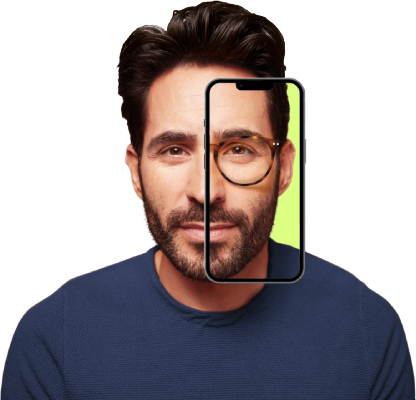
With our virtual try-on tool, finding your perfect pair is as easy as looking into your camera.
Everything you need to know to take care of your eyes — for life.
You can use this employer-sponsored benefit to save money all year on your vision care needs. Here are six good ways to maximize this perk.

Taking care of your family’s eye health is a necessary investment. America’s Best can help make it more affordable by allowing you to make the most of your flexible spending account (FSA) for eligible expenses.
FSAs are a benefit through your employer that allows you pay for many out-of-pocket medical expenses with tax-free dollars, explains Mike Vaughan, retail operations manager at National Vision, Inc., the parent company of America’s Best Contacts & Eyeglasses.
You decide how much money to set aside from every paycheck, and then you can use those funds all year to pay for health care expenses that are not covered by insurance — including certain eye health costs.
This benefit allows you to strategically plan how to use the funds for your family’s eye care throughout the year. When you’re deciding how much to put into your FSA, be sure to estimate the cost of your and your family’s annual eye care expenses too. If you don’t have vision insurance at all, this pool of money can help offset the cost of your glasses, contacts, and eye exams.
Most FSA plans don’t allow funds to carry over into the following year — that means you might lose any unused money come December 31. To make sure you don’t miss out on smart ways to use your FSA all year long, explore the extensive range of FSA-eligible eye care products and services at America’s Best.
Has it been a while since your last eye exam? Now’s the time to book an appointment!
This essential yearly visit saves you money in the long run, because you can detect any potential problems before they become more serious and expensive to treat. Your optometrist checks both your eye health and vision quality during the appointment.
America’s Best also offers eye exams with the purchase of any two pair of glasses, if you want to use your FSA funds on other eye expenses. (Vision insurance benefits cannot be combined with our 2-pair offers.)
For those who have vision insurance, your FSA can be used to cover your co-pays and deductibles. It also covers any eye medications that may be prescribed by your America’s Best eye doctor.
Maybe you need a new pair because your prescription changed, or maybe you just want a more stylish pair of frames. The reason for getting a new pair of eyeglasses doesn’t matter. You can also use your FSA funds to upgrade lens choices beyond what’s typically covered by vision benefits, including add-ons such as blue-light lenses and specific coatings.
Explore our lens offerings here.
Your FSA covers all types of contact lenses — from daily disposables and extended wear to single-correction and multifocals to silicone-based and gas permeable. Most states require that contact lens prescriptions be renewed annually.
You can choose from a range of FSA-eligible eye care items at America's Best, including:

With our virtual try-on tool, finding your perfect pair is as easy as looking into your camera.
Sunglasses aren’t just for looking stylish. They protect your eyes from harmful ultraviolet rays and lower your risk of cataracts and macular degeneration, both of which are leading causes of blindness.
FSA funds can cover the frames and add-ons such as Transitions™ and polarized sun lenses for prescription sunglasses.
Press play to learn more great ways to save on your family’s eye care:
Recommended reading:
How to Use Leftover FSA Cash to Buy New Glasses, Fast
Leftover FSA Cash? 4 Smart (and Fun!) Ways to Invest in Your Eyes